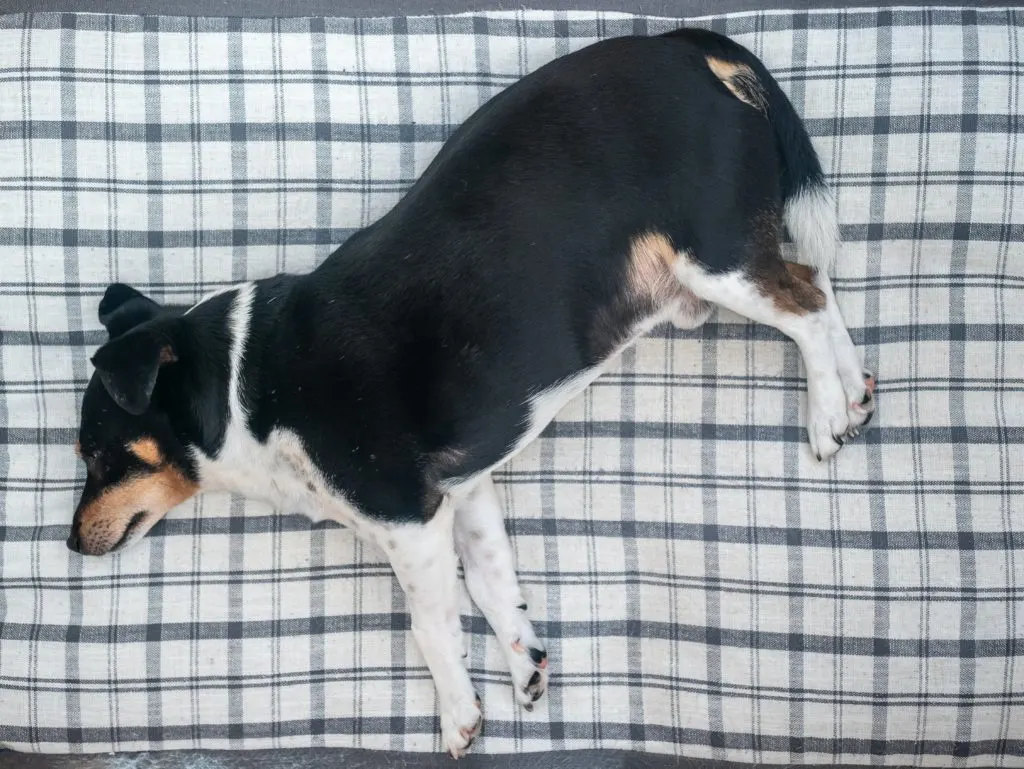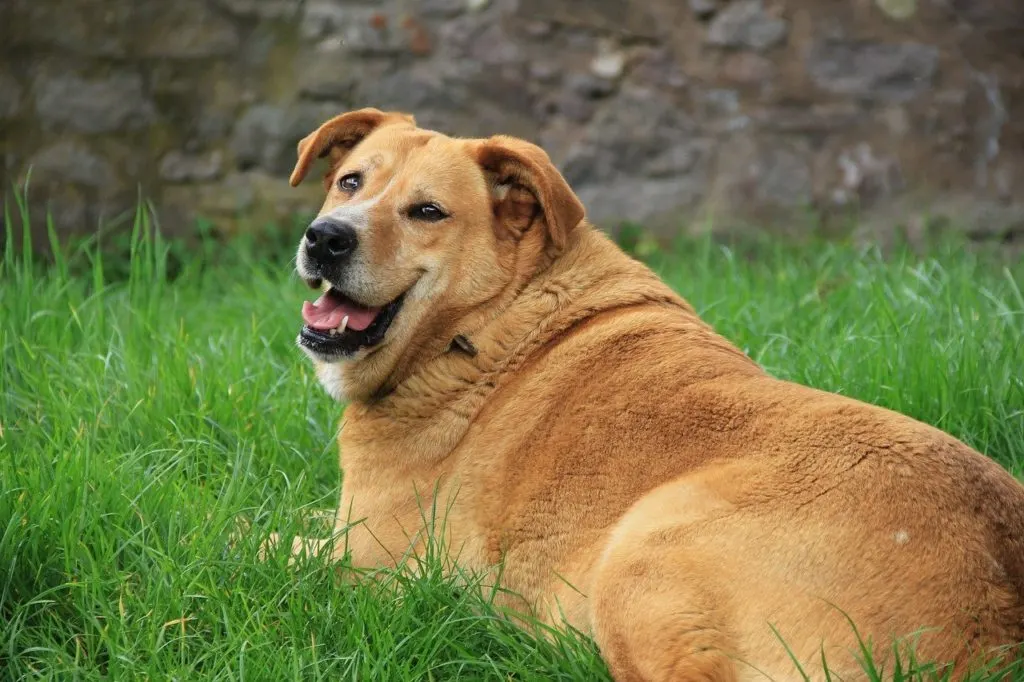We love our dogs, there is no denying that. We love them so much that we don´t want them to lack anything. Not toys, not treats, not food. But what if our endless love and attention, and a more importantly endless supply of treats, results in overweight dogs? What if we end up with a fat dog? Surely, that can´t be safe or healthy for the canine?
It isn´t healthy nor good for your dog to be obese. Excess fat won´t only make it more difficult for your dog to move around, but there are many negative health effects of being overweight, such as canine diabetes, heart problems, and kidney disease.
Ideally, we would never let our dogs put on extra weight, but what if your dog loves Swedish meatballs a little too much? What if you already have a fat dog, what do you do then?
Read some of our other articles:
- Brindle Pitbull Dog: Everything That You Should Know
- Valu Pak Dog Food review and 101 on dog nutrition
- Cane Corso Blue: The Rare And Mystery Cane Corso
- Onofrio Dog Shows: Everything That You Should Know
- Cane Corso Dogo Argentino Mix
- Doberman Pitbull Mix: Best Of Both Worlds?
- Bordoodle: The Intelligent And Energetic Doodle
- Should I Wake Up My Puppy To Pee At Night?
- Lycan Shepherd: A mix of three breeds
- Tibetan Mastiff: A Protective & Fearless Giant
Fat dog – What to do with heavy dogs?
We live an active life, sometimes we don´t have enough time to take care of ourselves, let alone make sure our canines get enough physical activity. Lack of exercise and a calorie intake that is way too high will undeniably lead to obese dogs.
Chronic overfeeding is thought to be the main cause of overweight dogs, and not getting enough exercise doesn’t help. Golden retrievers, bulldogs, and cocker spaniels are three breeds that are more likely to get fat than others.
The National Canine Cancer Foundation says that while some people think a fat dog is cute, all that extra weight puts too much stress on bones and joints, which can lead to diabetes, heart disease, high blood pressure, and cancer. In addition, your dog may not be able to breathe well because of these changes. These are just a few of the most common weight-related illnesses in pets these days, but there are many more out there.
How to know a dog is obese
But how do you know that your dog is obese? With some dogs, it´s very obvious that they are not at a healthy weight. In those cases that you don´t, you don’t know if your dog is overweight or not, you should get help from an expert, like a veterinarian. Your veterinarian will be able to tell you if your pooch has a couple of pounds too much.
If you don´t want to ask your veterinarian, you can look for certain symptoms yourself. Dogs of any breed should have ribs that you can feel because there should not be a lot of fat over them. Besides that, your dog should have a broad chest that is bigger than his belly, with a noticeable tuck-up from the chest to the belly. Your dog should also have a defined waist, a dog that is too fat often doesn’t have a waist or a separation between its chest and its abdomen. They will have a sagging waist.
Another trick to check f your dog is obese is to check their fat pads. Fat pads are another important sign that your dog is overweight. The fat that builds upon his or her body is also a sign. Some animals have fat bags between their legs, which makes them waddle as they move around. It’s also a good idea to check your dog’s hips during petting sessions. Fat pads will also be found on the tops of their hips if they are fat. Besides that, you might see your dog pant while walking, move slower, or nap more, simply being a couch potato.
If your dog has all the above-mentioned symptoms, you might have a fat dog. But, don´t worry, you can still help your dog achieve normal looks. Of course, it will involve hard work and persistence from both of you.
Health problems caused by much fat in the body
We´ve already mentioned that obesity in dogs can cause several health issues. But in this section, we want to explain in more detail what health problems your dog can face if they are obese. Scientific evidence proves that obesity in dogs is a very serious issue and can on your dog´s overall wellbeing.
Obesity greatly reduces a dog’s life and makes them more likely to get sick. A long time ago, it was thought that obese dogs lived shorter lives than slim dogs, often by 6-12 months. However, a long-term study of Labrador Retrievers found that even a small amount of weight can shorten a dog’s life expectancy by more than two years, say the researchers. This is a very bad piece of information.

In the past, fat was thought to be a mostly inactive tissue that only stored extra energy calories and added bulk to the body. This, on the other hand, is based on scientific evidence that fat tissue is active. People can get a wide range of illnesses because it releases inflammatory hormones and puts their bodies under a lot of stress. The idea that obesity is a long-term, low-level inflammatory illness is new.
The most common health problems caused by obesity:
- Diabetes
- Breathing problems
- High blood pressure
- Skin problems
- Heart problems
- Joint problems
- Mobility issues
- Canine arthritis
- Kidney disease
- Cancers
- Liver problems
We also need to say that there are breeds that are more prone to obesity. It turns out that Pugs, Beagles, and Golden Retrievers are the dog breeds that are most likely to get fat.
Experts at the Royal Veterinary College (RVC) looked at more than 20,000 dogs as part of an effort to figure out the range and frequency of health problems in pets.
Take a look at the full list, from high risk to low risk below:
- Pug
- Beagle
- Golden retriever
- English springer spaniel
- Border terrier
- Labrador retriever
- Cavalier King Charles spaniel
- Cocker spaniel
- West Highland white terrier
- Border collie
- Chihuahua
- Bichon Frise
- Staffordshire bull terrier
- Jack Russell terrier
- Purebred (other)
- Yorkshire terrier
- German shepherd
- Shih Tzu
What to do if your pet is obese – Important information
The first step to take if your dog is obese is to adjust your dog´s meals. You need to put together a dog weight loss plan if you want your canine´s diet to be successful.
When you want your dog to lose weight, you should change his meals and use specific nutritional products, a specific amount of food, and a specific meal frequency. Dogs can lose weight healthily and safely with products. It isn’t right to just cut back on how much food they eat now. This will lead to a lack of food over time.
You should feed a nutritional product that has less overall calorie density but still has the right balance of nutrients for your pets. A member of your dog’s health care team can help you figure out which nutritional products are best for your pet and the right amount of treats.
Once the new food has been chosen and the new portions have been determined, you must stay consistent with feeding your child. This means that you need to feed your child at the same time each day and not give them unhealthy snacks. Treats should make up no more than 10% of your dog’s daily calories. You can give your dog fresh green beans, frozen broccoli, and cauliflower, as well as air-popped popcorn, as snacks if your veterinarian says they’re safe for him or her.
If you need more help on determining your dog´s caloric intake you can always hire a veterinary advisor. They can always assist you in your dog´s weight loss journey.
Keep your dog active
To keep both their mental and physical health in good shape, all dogs, not just those that are overweight, need to move around a little bit. The Association for Pet Obesity Prevention calls this the “fat pet gap.” When canines grow in size over time, it may be hard for pet owners to notice, which leads to what they call the “fat pet gap.”
Exercise could help in the fight against (and prevention of) this. Keep up with your dog’s exercise routines and try to find things that he likes, and you’ll see a big change in both his weight and his mental health. Staying active includes a couple of walks a day and intensive exercise sessions.
But, be careful how you approach exercise. if your dog wasn´t too active, start slow. Peoples Dispensary for Sick Animals recommends gradually increasing the amount of time you spend walking your dog each day and the briskness of the walks until you spend up to 2 hours total each day walking your dog, depending on your dog’s breed and age, according to the organization.
Physical activity won´t only help your dog, it will also be beneficial to you and your mental health. But, keep in mind, losing weight is a process, it will take a certain amount of time, but in the end, it will be worth it.
Conclusion – Fat dog
If you have a fat dog, the only option you have is to put them on a diet. If their health is important to you, a diet is the only solution. But, for a diet to be successful, all family members need to be on board.
As a family, you must be on the same page to keep your dog’s weight in check. If your dog is overweight and someone is adding extra treats to his regular meals or giving him even a little more than he needs, you won’t be able to see any progress in his weight loss.
It’s just as important to make sure that everyone on your team is on the same page as the amount of work you do to make the change. Don´t let your spouse or child give your dog a little starter before you feed them the main course. We know how delicious food is and we also know you want your dog to enjoy that delicious food, but your dog´s health needs to be in the first place.

If you’re having trouble getting your dog to a healthy weight, you should call your vet’s office, if your dog is overweight, they will give you food suggestions. Your vet can help you make sure your dog is getting enough nutrition even if you feed it smaller meals.
An overweight dog is not a healthy or happy dog, and the risks of long-term weight problems are too great not to pay attention to. Keep your dog at a healthy weight, even if it takes a long time.

